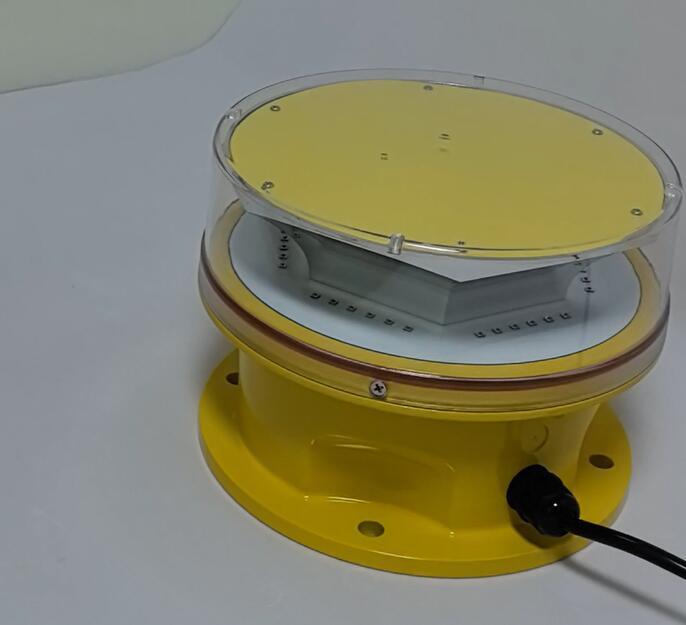The aviation lamp for tower installations plays a critical role in ensuring airspace safety, marking structures as visible obstacles for pilots. These specialized lamps, designed for both tall structures and airfield applications, offer reliable illumination, durability, and compliance with aviation regulations. This article delves into the purpose, key features, applications, and benefits of using aviation lamps for towers, highlighting their importance in modern aviation infrastructure.
The Purpose of Aviation Lamp for Tower Systems
Aviation lamps for towers are essential for marking tall structures that may pose a risk to aircraft navigation. Whether the tower is a communication mast, wind turbine, or high-rise building, these lamps alert pilots to the presence of potential obstacles in the flight path.
Compliance with international standards, such as those outlined by the International Civil Aviation Organization (ICAO) and the Federal Aviation Administration (FAA), makes aviation lamps for tower systems a mandatory component of airspace safety. Their primary function is to provide visible cues during day and night operations, particularly in low-visibility conditions.
Key Features of Aviation Lamp for Tower Installations
Aviation lamps for towers are specifically engineered to withstand environmental challenges and maintain optimal functionality. The following features are central to their design:
High Visibility and Light Intensity
These lamps emit bright, easily recognizable signals, often in red or white, depending on the structure's height and location. The lighting intensity can be low, medium, or high, based on regulatory requirements.
Energy Efficiency
Modern aviation lamps use LED technology, which reduces power consumption and offers an extended operational lifespan compared to traditional incandescent bulbs.
Durability and Weather Resistance
Aviation lamps are designed to operate in harsh environments, with robust materials that resist corrosion, extreme temperatures, and UV radiation.

Automatic Control Systems
Many aviation lamps for towers include photocells or timers for automatic activation during dusk and deactivation at dawn, ensuring consistent performance without manual intervention.
| aviation lamps for towers | AS45 |
Ease of Installation and Maintenance
Modular designs make it easy to install and replace components, reducing downtime and maintenance costs.
Compliance with Aviation Standards
Meeting ICAO, FAA, and other local aviation authority requirements ensures that these lamps deliver consistent and standardized performance across various installations.
Applications of Aviation Lamp for Tower Systems
The aviation lamp for tower systems is versatile and can be used in numerous scenarios:
Telecommunication Towers
Towers used for broadcasting, cellular networks, and radar systems are often positioned in or near flight paths, making aviation lamps a necessity to prevent collisions.
Wind Turbines
Wind farms, especially those located near airfields or on elevated terrains, require aviation lamps to mark the turbines and protect air navigation.
High-Rise Buildings
Urban skyscrapers that exceed certain height thresholds must be equipped with aviation lamps to remain visible to aircraft at all times.
Cranes and Temporary Structures
Construction cranes and other temporary tall structures are also fitted with aviation lamps during their operational periods.
Power Transmission Towers
High-voltage transmission towers often intersect with low-altitude flight zones, necessitating the use of aviation lamps to highlight their presence.
Benefits of Aviation Lamp for Tower Systems
Aviation lamps for towers provide several advantages that contribute to aviation safety and operational efficiency:
Enhanced Airspace Safety
By clearly marking tall structures, these lamps help pilots avoid potential hazards, reducing the risk of mid-air collisions.
Regulatory Compliance
Installing aviation lamps ensures adherence to legal standards, mitigating penalties and ensuring smooth operations for structure owners.
Operational Cost Efficiency
LED aviation lamps, with their low energy consumption and minimal maintenance requirements, offer long-term cost savings.
Sustainability
Many aviation lamps are designed with environmentally friendly technologies, such as solar-powered systems, reducing their carbon footprint.
Uninterrupted Functionality
Advanced designs with backup power systems ensure that aviation lamps remain operational even during power outages.
Innovations in Aviation Lamp for Tower Systems
Technological advancements are continuously enhancing the functionality and efficiency of aviation lamps for towers. Some notable innovations include:
Solar-Powered Aviation Lamps
Solar-powered options reduce reliance on grid electricity, making them ideal for remote or off-grid installations.
Smart Monitoring Systems
Internet of Things (IoT) integration allows for real-time monitoring of aviation lamps’ performance, enabling quick identification and resolution of faults.
Adaptive Lighting Systems
Some aviation lamps are designed to adjust their intensity based on environmental conditions, such as fog or heavy rain, ensuring optimal visibility at all times.
Light Pollution Reduction
Innovations in lens design and beam control minimize light spillover, reducing the environmental impact on nearby ecosystems.
Challenges and Considerations
Despite their benefits, aviation lamps for towers face certain challenges. Regular maintenance is essential to ensure their functionality, especially in harsh environments. Additionally, operators must balance visibility requirements with the need to minimize light pollution in surrounding areas.
Conclusion
The aviation lamp for tower systems is a cornerstone of aviation safety, enabling the secure operation of aircraft in complex and challenging environments. By providing clear and reliable visual markers, these lamps help mitigate risks, enhance regulatory compliance, and ensure the safe coexistence of tall structures and aviation activities.
As technology evolves, the aviation lamp for tower systems will continue to improve, offering greater efficiency, sustainability, and reliability. For stakeholders in industries such as telecommunications, renewable energy, and construction, investing in high-quality aviation lamps is not only a regulatory requirement but also a critical step toward ensuring safety and operational excellence.